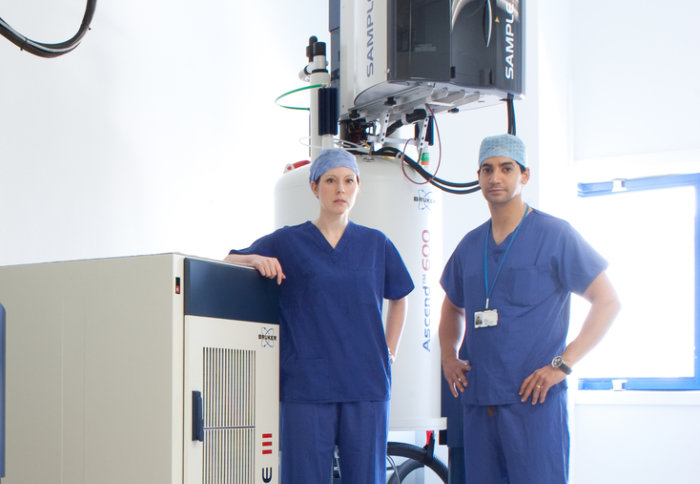A new spin on NMR metabolic phenotyping

Researchers have developed a novel computational method for enhancing the small molecule profile of samples measured by NMR.
The work by researchers in Section of Bioanalytical Chemistry, appearing in Chemical Science, surmounts one of the key challenges in metabolomics analysis of complex samples whereby signals from larger biomolecules can obscure the more desirable metabolite-derived signals which shed light on patient physiology or pathology.
The lead author, MDR’s Dr Panteleimon Takis, describes it as “Small Molecule Enhancement SpectroscopY (SMolESY) by computational suppression of 1H-NMR macromolecular signals: a functional replacement for on-instrument spin-echo experiments”.
The experiment is entirely computational, deriving the enhanced spectra from routinely collected data, and aims to replace the need for additional specialised experiments which are part of standard NMR protocols for small molecule analysis. For large data sets such as those run through the National Phenome Centre, this could result in significant time saving and improved capability for metabolite quantification.
The approach was implemented in an open source cheminformatic toolbox and successfully applied to more than 3000 samples of various biological matrices, validating the method as efficient alternative to on-instrument experimentation, facilitating NMR use in routine and large-scale applications.
Read the full paper:
Panteleimon G Takis, Beatriz Jimenez , Caroline Sands, Elena Chekmeneva and Matthew R. Lewis
Article text (excluding photos or graphics) © Imperial College London.
Photos and graphics subject to third party copyright used with permission or © Imperial College London.
Reporter
Benjie Coleman
Department of Surgery & Cancer